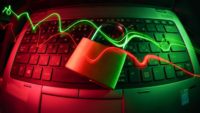Hard Rock Stadium in Florida deploys cybersecurity solution to protect critical infrastructure

Hard Rock Stadium in Miami Gardens, Florida, which hosted the Super Bowl LIV, was looking for a solution to protect its critical infrastructure and ensure a consistent experience for fans and spectators. Hard Rock Stadium is a football stadium located just north of Miami. It is the home stadium of the Miami Dolphins of the National Football League. Hard Rock Stadium also plays host to the Miami Hurricanes football team during its regular season.
When the Hard Rock Stadium was chosen to host the Super Bowl LIV, played earlier in February of this year, it wanted a solution that would secure the physical and online environments of the organization. More than 60K fans came out to the venue for the football championship.
Atos and Forescout Technologies implemented a joint solution of Forescout’s cloud-based network segmentation solution eyeSegment and Atos’ managed security services to protect more than 7,100 IT, Internet of Things (IoT) and operational technology (OT) devices, including point-of-sale terminals, scoreboards, televisions, visual broadcasting equipment, field microphones and servers connecting to the Hard Rock Stadium’s network. Though the solution was implemented for the Super Bowl LIV, the stadium continues to use the technology to protect current and future events.
“The security of our fans and their physical and online environments is of the utmost importance to us. While more than 65,000 fans are excited for touchdowns, most are unaware thousands of technology devices in our stadium’s infrastructure must be protected from malicious intent by threat actors,” said Kim Rometo, Vice President, Chief Information Officer, Miami Dolphins and Hard Rock Stadium. “With Atos and Forescout we recognized an opportunity to secure Hard Rock Stadium in new and critical ways, effectively creating a defense strategy that protects our operational and informational technology.”
As a result of the cybersecurity solution, Atos and Forescout flagged more than 600 security events, secured 400 new OT devices connected to the network for the halftime show, and monitored more than 1,200 point of sales devices for malicious patterns surrounding the event.
Looking for a reprint of this article?
From high-res PDFs to custom plaques, order your copy today!





